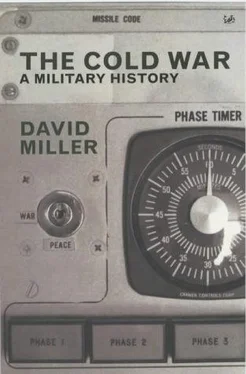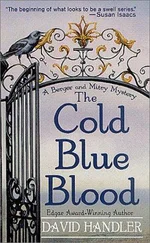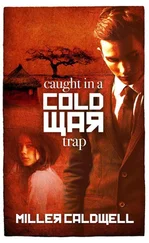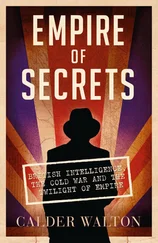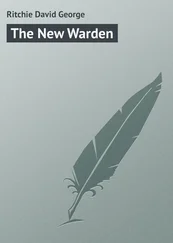Originally, the chairmanship of the Military Committee in Chiefs-of-Staff Session rotated annually between members, but a separate chairman of the Military Committee in Permanent Session was appointed in 1958, and from 1963 onwards the same officer chaired both committees. Designated the Chairman of the NATO Military Committee, this officer was in effect the senior military officer in NATO, and since the post was created in 1958 he has always been a European, thus balancing the US influence in other senior posts in the Alliance. [3]
On the establishment of NATO, a series of regional planning groups (RPGs) was set up, each comprising those nations with a strategic interest in the particular area:
• Canada/US RPG – Canada, USA;
• Western Europe RPG – Benelux, Canada, France, UK, USA;
• North Atlantic Ocean RPG – Canada, Denmark, France, Iceland, Norway, Portugal, UK, USA;
• Northern Europe RPG – Denmark, Norway, UK, USA;
• Southern Europe/Western Mediterranean RPG – France, Italy, UK, USA.
These RPGs were not, however, the only forums where discussions were taking place, and there were a number of bilateral links, of which by far the most important was that between the United States and the United Kingdom. These two countries not only had strong traditional and cultural ties, but also had forged a close alliance during the war under the Allied Combined Chiefs-of-Staff (CCS) organization. This CCS mechanism continued to be used after the war, and during 1945–9 it produced a variety of combined war plans to counter possible Soviet aggression. The link continued with the setting-up of NATO, and was used by them, as the two predominant military powers in the new organization, for private discussions on the command arrangements for the Alliance. [4]
The RPGs produced a variety of organizational proposals, but, despite external pressures such as the explosion of the first Soviet atomic bomb, the Communist takeover in China and the outbreak of the Korean war, the discussions dragged on through the whole of 1950 and 1951, and it was not until early 1952 that a full structure was in place.
Naturally, a hierarchy of command appointments were needed, and these were designated as follows:
• major NATO commands (MNCs) – the most senior appointments, at four-star level, normally designated ‘Supreme Allied Commander…’ (SAC); e.g. SACEUR (Supreme Allied Commander Europe);
• principal subordinate commands (PSCs) – the next level down, headed by a commander-in-chief (CINC) at either three- or four-star level; e.g. CINCENT (Commander-in-Chief Allied Forces Central Europe);
• major subordinate commands (MSCs) – these were usually at four-star level, headed by a commander; e.g. COMCENTAG (Commander Central Army Group). [5]
It was clear that one supreme allied commander would be required for Europe (SACEUR), that he would be an American, and that he should be the most prestigious military officer of the day. Thus, General Dwight D. Eisenhower took up this appointment on 2 April 1951, with Field Marshal Bernard Montgomery, the British former military head of the Western Union Defence Organization (Brussels Treaty) forces, as his deputy. They established Supreme Headquarters Allied Powers Europe (SHAPE) at Fontainebleau in France, and quickly agreed on a command structure, which was in place in November 1951. This consisted of:
• Allied Land Forces Central Europe (AFCENT) – a four-star land command covering Benelux, France and West Germany;
• Allied Air Forces Central Europe (AIRCENT) – a four-star air command, covering the same geographical area as AFCENT;
• Allied Forces Northern Europe (AFNORTH) – a four-star, joint (i.e. navy, army, air force) command, covering Denmark and Norway;
• Allied Forces Southern Europe (AFSOUTH) – a four-star joint command, covering Italy and the western Mediterranean, and including the US Sixth Fleet;
• Flag Officer Western Europe (FOWE) – who provided naval representation to SHAPE, but commanded only the French, UK and US Rhine flotillas.
It was, however, significant that the British refused to place the land or air defences of the United Kingdom under NATO. As a result, the land defence of the UK remained a national responsibility throughout the Cold War, although, as will be discussed later, the air defence eventually did become a NATO responsibility.
If SACEUR’s demesne was agreed without much disagreement, the same cannot be said of the Atlantic, where the two basic issues were the subdivisions of the command and the fact that both the Americans and the British wanted to provide the sea-going commander. The matter was not just a question of national prestige, however: it also included important factors of wartime strategy, with the United States being concerned about troops and supply convoys crossing the Atlantic in a west–east direction in war, while British concerns centred on south–north trade routes, including that for oil. Many meetings were held and a large number of alternative plans were discussed, with the naval discussions not being helped when the issue entered the British political arena in 1951, with Churchill, at that time the leader of the opposition, attacking the socialist government (led by Clement Attlee) for agreeing to a US officer as SACLANT. The problem was also complicated by disagreements over command in the Mediterranean and in the southern part of NATO’s Atlantic area, which had already been designated IBERLANT.
In the autumn of 1951 a British general election put the problem on hold, and when Churchill again became prime minister, on 26 October, the question of NATO naval commands featured high on his list of priorities. Churchill went to Washington in January 1952, and after a round of fierce arguments he eventually gave way, although a British admiral was to be appointed Deputy SACLANT. The principle agreed, the navy planners then set up a complicated organizational system which involved numerous situations where an officer held two appointments (known as ‘double-hatting’) or even three (‘triple-hatting’), although the problems inherent in such an arrangement were alleviated by having separate staffs for the various functions.
The problems did not go away, however, and among the knotty issues was the question of the US navy’s aircraft carriers. The control of atomic weapons aboard these carriers was governed by the US McMahon Act, which stipulated that control could not be passed to another power, and this raised a major hurdle when the US Navy’s Strike Fleet Atlantic (STRIKE-FLTLANT) was operating in the Eastern Atlantic area, where the NATO commander was Commander-in-Chief Eastern Atlantic (CINCEASTLANT), a British officer. There were also problems over IBERLANT, which were eventually solved by placing Commander IBERLANT, a British officer, under CINCEASTLANT.
After much argument, the naval organization in the Atlantic settled down in late 1952:
• SACLANT (US) and his deputy (UK) were in the headquarters at Norfolk, Virginia;
• STRIKEFLTLANT remained under the command of SACLANT, regardless of its position in the Atlantic;
• CINCWESTLANT (US) exercised command over most of the northern Atlantic, with two sub-area commands: US Atlantic Sub-Area and Canadian Sub-Area;
• CINCEASTLANT (UK) controlled four geographical sub-areas – Central (UK), Northern (UK), Biscay (French) and IBERLANT (UK) – with a fifth functional command (Commander Submarines Eastern Atlantic (COMSUBEASTLANT)), being a British officer.
One notable difference between the American and other command systems concerned the air. Under the US system the naval commander controlled all his air assets, since the US navy had assumed responsibility for long-range maritime patrol aircraft from the (then) US Army Air Force in 1943. Under the British and French systems, however, land-based air support was provided by the air force, as a result of which there were two commanders of equal rank – one navy, one air force – at EASTLANT and at the geographical sub-areas.
Читать дальше
